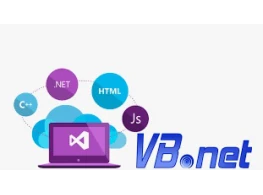Enterprise Development In Visual Basic .NET
Objective:
This course is focused on the "back end" part of Enterprise programming, not the user interface. The sample applications are Windows applications, to keep the pre-requisites to a minimum. You’ll be able to use these same concepts as the back end to a web (ASP.NET) application, as well.
course outline:
- Introduction to Enterprise Programming
- Characteristics of an Enterprise Application
- Asynchronous Programming and Threading
- Interoperability and Reuse
- Transactions
- Security
- The "ilities"
- Asynchronous Programming
- Advantages of Asynchronous Programming
- The BeginSomething and EndSomething Function Calls
- The Sample Application
- Calling a Begin Function and Setting Up Notification
- Calling an End Function
- Calling a Web Service Asynchronously
- Threading
- Threading Concepts
- Starting a Thread
- Passing Parameters to a Thread
- Getting Answers from a Thread
- Updating Form Values from the New Thread
- Marshalling to the Form Thread
- Thread Priorities
- Stopping a Thread
- Preventing Collisions
- Enterprise Services Overview
- What Are Enterprise Services?
- Is COM Dead? Is COM+ Dead?
- What Is a Serviced Component?
- The Global Assembly Cache
- Interop: COM Calling .NET
- Deploying a COM Project that Calls .NET
- Interop: .NET Calling COM
- Interop: Pinvoke
- Transactions
- Transaction Concepts
- Context
- A Transaction Example
- Using Transactions
- Ending a transaction
- Role-Based Security
- What Is Role-Based Security?
- Checking Roles in Code
- Demanding Roles with Attributes
- Establishing Roles: Windows User Groups
- Enterprise Services Roles
- Establishing Roles with Component Services
- Controlling Object Lifetime
- Resource Management and Dispose()
- Object Pooling
- Just in Time Activation
- Synchronization
- Lifetime Sample
- Combinations of Enterprise Services Attributes
- Wrapping a Legacy App as a Web Service in COM+
- Why use COM+ to Expose a Web Service?
- Using Component Services to Expose a Web Service
- Requesting SOAP Support
- Using the Wrapped Component
- Messages with MSMQ
- What Is MSMQ?
- Setting Up a Queue
- Sending a Message to a Queue
- Processing a Message from a Queue
- MSMQ Acknowledgments
- More Reliability Features
- MSMQ and Transactions
- Components
- What Are Queued Components?
- Sample Application
- Creating the Component and the Interface
- Accessing the Recorder from a Client
- Handling Errors
- Loosely Coupled Events
- Considerations for Scalability, Reliability, and the Other "ilities"
- High-Performance Enterprise Applications
- Availability
- Maintainability
- Performance
- Scalability
